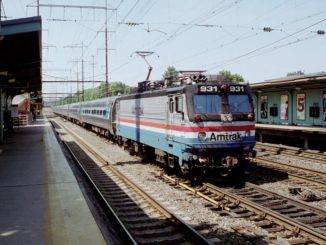OAKLAND — Amtrak ridership in Fiscal Year 2007 (FY07) increased to 25,847,531, marking the fifth straight year of gains and setting a record for the most passengers using Amtrak trains since the National Railroad Passenger Corporation started operations in 1971.
The three California corridors, operated under the partnership banner, Amtrak California, are the busiest in the nation behind the Washington – Boston Northeast corridor and the Empire corridor serving Albany – New York City. Passenger traffic on the Amtrak California trains continues to expand. Since 2001, ridership increased more than 35 percent while the State’s population rose by 7.1 percent.
The Capitol Corridor service which operates between Auburn and San Jose, carried more than 1.4 million passengers in FY07, a 15 percent increase over the same period last year. Ticket revenue topped $18 million, a 21 percent increase over the previous 12 months.
“We want to attract new riders on the train and get drivers off the highways. When we see that our ridership numbers grow every month, we know we’re accomplishing that goal,” said Forrest Williams, Chair of the Capitol Corridor Joint Powers Authority. “For people who value how they spend their time, the train offers a better alternative than sitting in traffic.”
The Pacific Surfliner, San Diego – San Luis Obispo, showed a nine percent increase in ticket revenue, reaching more than $46 million and carried more than 2.7 million passengers.
More than 804,000 passengers rode the San Joaquins trains on the San Francisco/Oakland-Sacramento-Bakersfield corridor. The route is recovering from major track improvement work on a segment owned by BNSF Railway.
Amtrak operates the Pacific Surfliner service, with 12 daily roundtrips between San Diego and Los Angeles, with five extending to Santa Barbara and two continuing to San Luis Obispo, under a contract with Caltrans.
Amtrak also operates the San Joaquins service under the same contract with Caltrans, with six daily round-trips to Bakersfield from Oakland or Sacramento.




